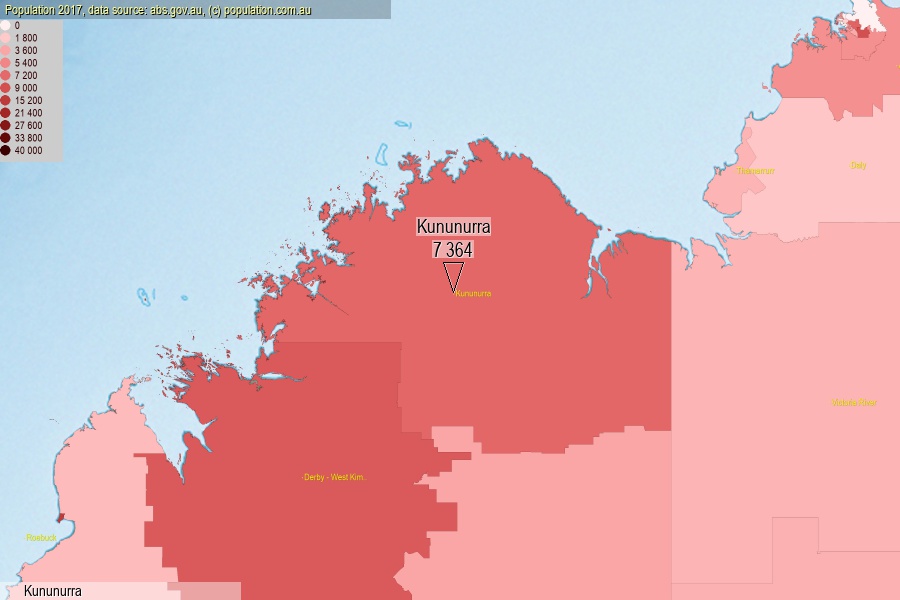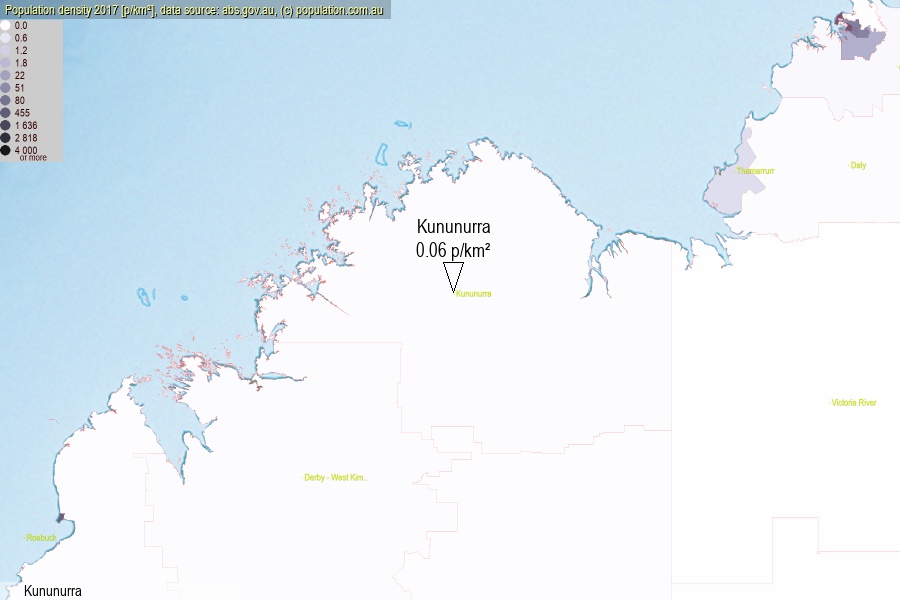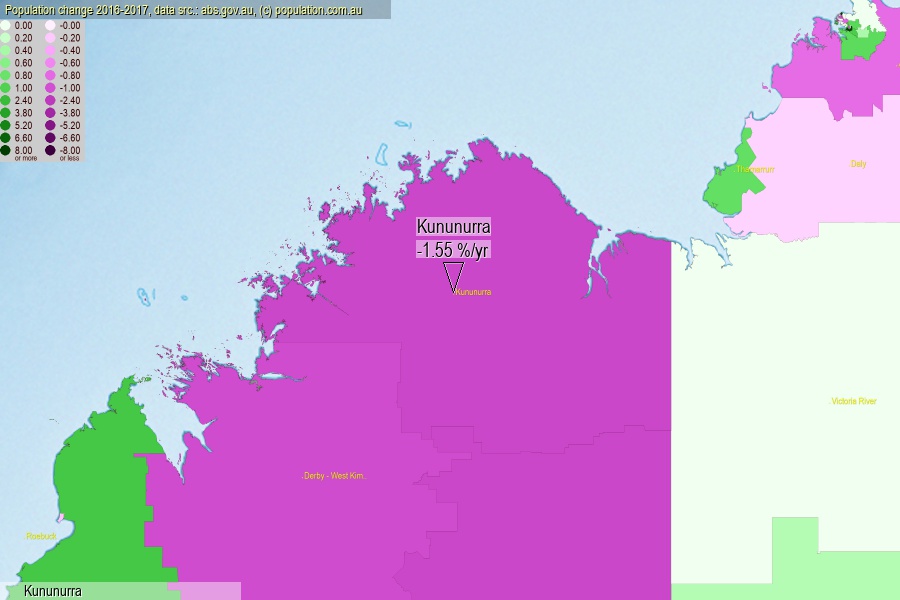 population.com.au
population.com.auLast official estimated population of Kununurra (as Statistical Area Level 2) was 7 364 people (on 2017-06-30)[2]. This was 0.03% of total Australian population and 0.284% of WA population. Area of Kununurra is 117 707.00 km², in this year population density was 0.06 p/km² . If population growth rate would be same as in period 2016-2017 (-1.55%/yr), Kununurra population in 2025 would be 6 498. [0]



Click to enlarge. Kununurra is located in the center of the images.
Population [people], population density [p./km²] and population change [%/year] [2]
View borders » (new window) [4]
[2001-2002] +1.84 %/Yr.
[2002-2003] +1.12 %/Yr.
[2003-2004] +0.34 %/Yr.
[2004-2005] +0.23 %/Yr.
[2005-2006] +0.42 %/Yr.
[2006-2007] +1.63 %/Yr.
[2007-2008] +3.56 %/Yr.
[2008-2009] +2.34 %/Yr.
[2009-2010] +1.74 %/Yr.
[2010-2011] +1.76 %/Yr.
[2011-2012] +0.29 %/Yr.
[2012-2013] +0.18 %/Yr.
[2013-2014] -2.70 %/Yr.
[2014-2015] -2.98 %/Yr.
[2015-2016] -3.89 %/Yr.
[2016-2017] -1.55 %/Yr.
[0] Calculated with linear interpolation from officially estimated population
[1] Read more about SA2 and Australian Statistical Geography Standard (ASGS) on abs.gov.au
[2] Population data from Australian Bureau of Statistics (Population and density: 2017; change: 2016-2017)
[3] Digital Boundaries: Australian Statistical Geography Standard (ASGS) 2016.
[4] Border coordinates are simplifyed using Ramer-Douglas-Peucker algorithm.